I'll never forget my first encounter with Pancit Habhab during an impromptu road trip to Lucban, Quezon. Exhausted from exploring the town's famous Pahiyas Festival, I found myself drawn to a bustling street corner where locals were gathered around a food vendor.
What caught my eye wasn't just the aromatic noodles being tossed in a massive wok, but the unique way people were eating them: directly from banana leaves, no plates or forks in sight. The vendor showed me how to shape the leaf into a makeshift chute and demonstrated the signature "habhab" eating style.
That first bite was a revelation – the tender noodles, savory pork, and crisp vegetables were enhanced by a subtle, fresh aroma from the banana leaf that you simply can't replicate with regular dinnerware. It's been years since that afternoon in Lucban, but I still insist on serving this dish the traditional way at home, much to the delight (and sometimes messy amusement) of my dinner guests.
Jump to:
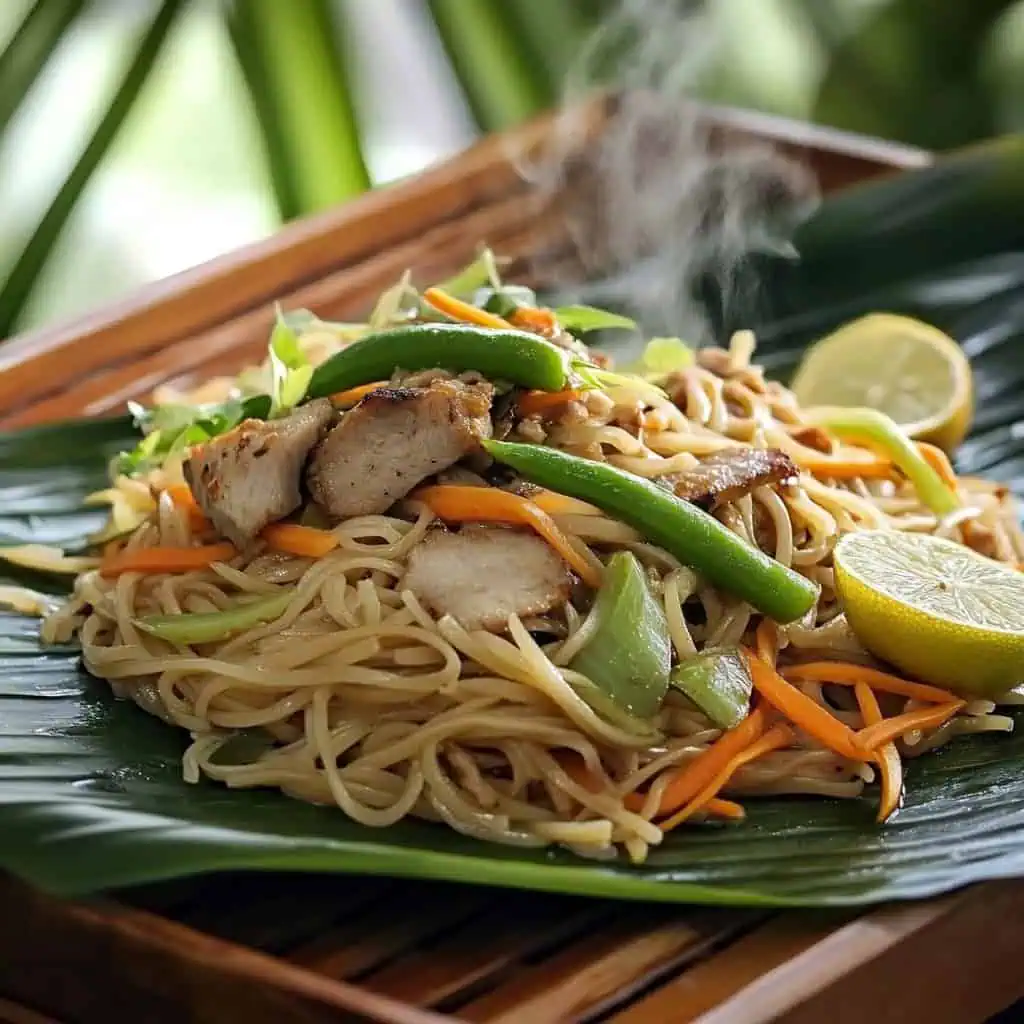
Why You'll Love This Recipe
This iconic Filipino noodle dish offers a truly authentic dining experience. The combination of chewy noodles, savory meats, and crisp vegetables creates a perfect balance of textures and flavors. What makes it especially unique is the traditional serving method using banana leaves, which infuses the dish with a subtle, natural aroma while providing an eco-friendly dining solution that predates modern disposable containers.
Ingredients
The ingredients in Pancit Habhab are carefully chosen to create a perfect balance of flavors and textures that represent Lucban's culinary heritage. Lucban miki noodles provide the chewy foundation that holds up well to the unique eating style. Pork belly adds richness and satisfying fat, while liver contributes a distinctive mineral depth.
The crisp vegetables—carrot and chayote—offer freshness and crunch that contrast beautifully with the tender meats. Garlic, onion, soy sauce, and fish sauce build the savory base that defines Filipino cuisine, while the final squeeze of calamansi brightens everything with a burst of citrus.
Perhaps most important is the banana leaf, which isn't just a serving vessel but actually infuses the hot noodles with subtle aromatic compounds that have become an essential part of the dish's authentic flavor.
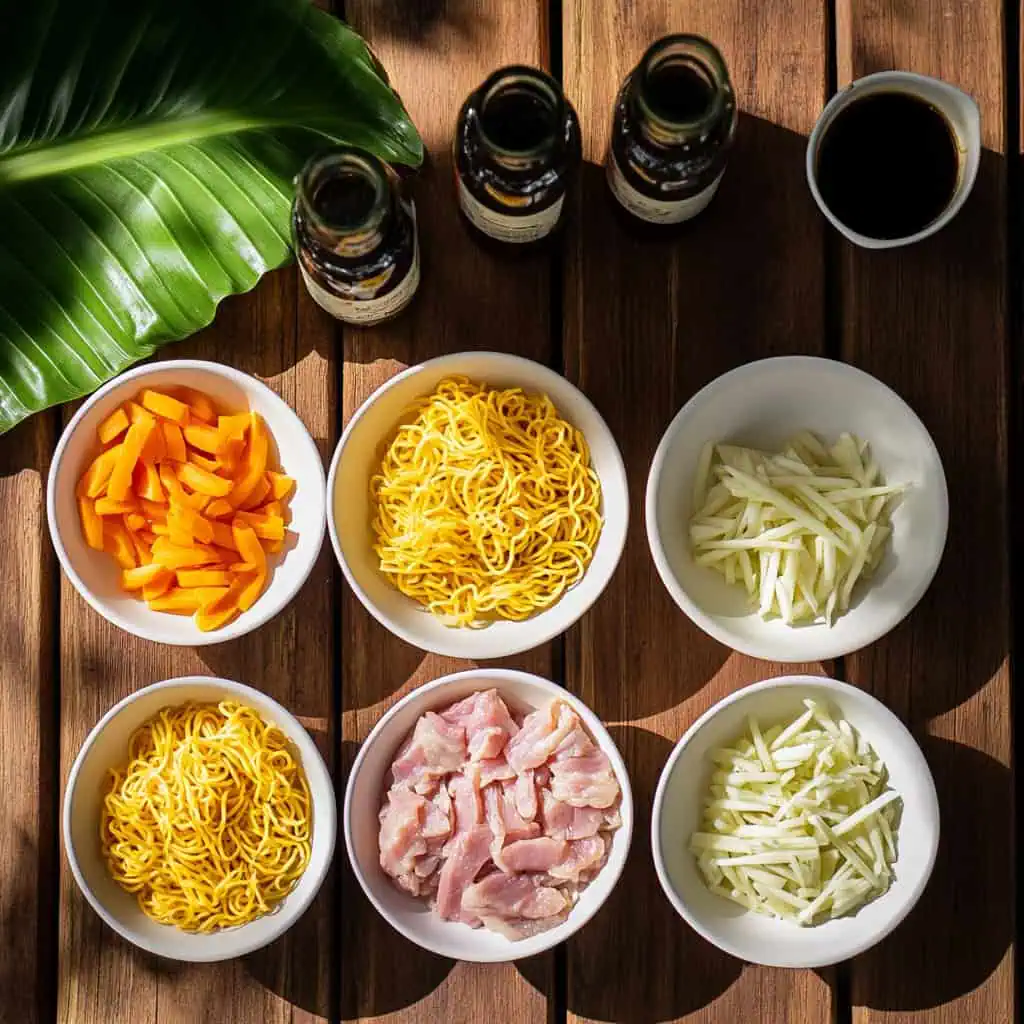
- 500g Lucban miki noodles (or Shanghai noodles)
- 300g pork belly, thinly sliced
- 150g pork liver, sliced
- 1 carrot, julienned
- 1 chayote, julienned
- 8 cloves garlic, minced
- 1 onion, chopped
- 3 tablespoons soy sauce
- 4-6 cups pork or chicken stock
- Freshly ground black pepper
- Fish sauce to taste
- Calamansi lime (or regular lime/lemon) for serving
- Cooking oil
- Banana leaves, cleaned and passed through flame
Equipment
- Large wok (kawali) - Essential for proper heat distribution and stir-frying the noodles and ingredients evenly
- Sharp knife - For precise cutting of meat and vegetables to ensure uniform cooking
- Cutting board - Provides a safe, stable surface for preparing all ingredients
- Tongs - Makes handling and tossing the noodles much easier without breaking them
- Measuring cups and spoons - Ensures recipe accuracy for consistent results every time
- Small bowls - For organizing pre-measured ingredients before cooking begins
- Gas stove or high-heat source - Helps achieve the proper "wok hei" or breath of the wok
- Flame source - For heating banana leaves to make them pliable (can be your stove burner)
- Serving platter - For family-style serving before portioning onto banana leaves

How To Make
- Start by heating your wok over high heat. While it's heating, pass your banana leaves quickly over an open flame until shiny and pliable, then set aside.
- Once your wok is hot and lightly smoking, add one tablespoon of oil. Add the sliced pork belly and cook until golden brown, about 3-4 minutes.
- Lower the heat to medium, then add minced garlic and chopped onions. Cook for 2 minutes until the onions become clear and fragrant.
- Turn the heat back to high. Add your carrots, chayote, and pork liver. Cook for exactly 1 minute – you want the vegetables still crisp and the liver just cooked. Remove everything from the wok and set aside.
- Pour 3 cups of stock and soy sauce into the same wok. Let it come to a strong boil. Add your Lucban miki or Shanghai noodles and cook for 5 minutes, stirring now and then so they don't stick. If the noodles look dry, add more stock – you want them moist but not swimming in liquid.
- Put the cooked meat and vegetables back in the wok and mix everything well. Season with fish sauce to taste and add fresh ground black pepper. The noodles should still have a nice bite to them.
- To serve, shape a banana leaf into a half-tube. Put a portion of the hot pancit on the leaf and serve right away with calamansi halves on the side.
- Show your guests how to eat it the traditional way: lift one end of the banana leaf near your mouth and gently slide the noodles in. Keep some napkins nearby – it might take a bit of practice to get it right.

Tips from Lola's Kitchen
- Banana Leaf Preparation: Slightly char both sides of the banana leaves to release their natural oils and enhance the aroma. This also makes them more pliable and less likely to crack when shaped.
- Vegetable Perfection: Never overcook the vegetables - they should remain crisp-tender with a bright color. Add them at the last minute to preserve their texture and nutritional value.
- Noodle Texture: The noodles should be slightly firm (al dente) as they will continue cooking from residual heat. Test a strand before removing from heat.
- Flavor Balance: Always taste before adding fish sauce, as stock saltiness varies. Start with less than you think you need - you can always add more!
- Wok Temperature: Maintain a very hot wok for quick cooking and to achieve that coveted "wok hei" (breath of the wok) flavor that separates restaurant-quality dishes from home cooking.
- Meat Preparation: Freeze pork belly for 15-20 minutes before slicing to make it easier to cut into thin, even slices.
- Serving Style: Prepare the banana leaves just before serving, as they can dry out and become brittle if prepared too far in advance.
Substitutions
- Noodles: If Lucban miki is unavailable, use Shanghai noodles, regular miki, or even thick egg noodles. In a pinch, spaghetti can work but will give a different texture.
- Protein: Chicken breast or shrimp make excellent substitutes for pork. For a more economical version, use ground pork instead of sliced pork belly.
- Liver: If you're not a fan of liver, substitute with more pork belly or add chicken gizzards for a similar mineral-rich flavor.
- Vegetables: Chayote can be replaced with green papaya, cabbage, or even zucchini. Carrots can be swapped with bell peppers for a different color and flavor profile.
- Banana Leaves: If banana leaves are impossible to find, parchment paper can be used for serving, though you'll miss the aromatic quality the leaves impart.
- Calamansi: Regular lime or lemon juice works well as a substitute for the traditional calamansi.
- Stock: Vegetable stock can be used for a lighter flavor profile or to make the dish suitable for pescatarians (if using seafood protein).
Troubleshooting
- Noodles Too Dry: Add hot stock gradually while stirring. The noodles should be moist but not swimming in liquid. Keep additional hot stock ready during cooking.
- Banana Leaf Breaks: Double-layer the leaves for strength or heat them longer to make them more pliable. Make sure to pass them over flame on both sides.
- Noodles Too Soft: Reduce cooking time and use less liquid. Consider soaking dried noodles for less time or rinsing fresh noodles before cooking.
- Vegetables Too Soft: Add them later in the cooking process or blanch them separately and add just before serving to maintain crispness.
- Too Salty: Add a small amount of sugar and a squeeze of citrus to balance the flavor. You can also add more unseasoned vegetables to dilute the saltiness.
- Not Flavorful Enough: Enhance with a splash more soy sauce, a pinch of MSG (if you use it), or a spoonful of oyster sauce for depth.
- Slippery Eating: If the habhab eating style is challenging, try using smaller portions on each banana leaf or creating a deeper fold in the leaf.
Storage & Reheating
- Refrigeration: Store leftover pancit in an airtight container in the refrigerator for up to 3 days. The noodles will absorb more liquid as they sit.
- Reheating Method: The best way to reheat is in a hot wok with a splash of water or stock to revive the moisture. Stir-fry quickly until just heated through to avoid overcooking.
- Microwave Option: If using a microwave, sprinkle a few drops of water over the noodles, cover with a damp paper towel, and heat in 30-second intervals, stirring in between.
- Freezing: Not recommended as the texture of the noodles and vegetables will deteriorate significantly.
- Fresh Serving: This dish is truly best consumed fresh off the wok, as the contrast between the hot noodles and the cool banana leaf creates the signature aroma that makes Pancit Habhab special.
- Separate Components: If preparing in advance, consider keeping the cooked noodles and the meat/vegetable mixture separate, combining them only when reheating for better texture.

FAQ
Why is it called "Habhab"?
"Habhab" refers to the slurping action when eating the noodles directly from banana leaves. The term mimics the sound made during this unique eating style.
Can I use a plate instead of banana leaves?
While possible, the banana leaf imparts unique flavors and is part of the authentic experience. The oils released from the heated leaf give the noodles a distinctive aroma that enhances the overall flavor profile.
How do I prevent the banana leaf from breaking?
Pass it through flame briefly on both sides to make it pliable and avoid tears. You can also double-layer thinner leaves for added strength.
Is this dish spicy?
Traditional Pancit Habhab is not spicy, but you can add sliced bird's eye chilies (siling labuyo) or chili flakes if you prefer heat.
Can I make this dish vegetarian?
Absolutely! Substitute the meat with firm tofu, mushrooms (shiitake works well), and use vegetable stock instead of pork or chicken stock.
How important is the liver in this recipe?
The liver adds a distinctive richness, but the dish will still be delicious without it if you're not a fan.
What's the best drink pairing for Pancit Habhab?
Traditionally, it's enjoyed with ice-cold soda or fresh coconut juice (buko juice). A light beer also pairs wonderfully with the savory flavors.
Can I prepare components ahead of time?
Yes! You can slice all meats and vegetables a day ahead and store them separately in the refrigerator. The banana leaves can be cleaned ahead but should be heated just before serving.
Why did Lucban locals start eating pancit from banana leaves?
This practice emerged from street food vendors needing a practical, disposable serving solution before modern containers were available. It was both economical and environmentally friendly.
What makes Pancit Habhab different from other pancit varieties?
The distinctive eating method using banana leaves, the thicker noodles, and the specific combination of ingredients set it apart from other Filipino pancit varieties.
Related
Looking for other recipes like this? Try these:
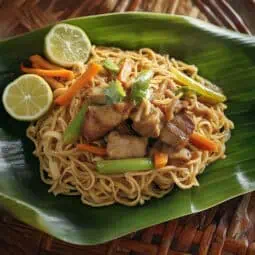
Authentic Pancit Habhab (Lucban-Style Noodles)
Equipment
- Large wok (kawali) For proper heat distribution and stir-frying
- Sharp knife (kutsilyo) For precise ingredient preparation
- Cutting board (Sangkalan) For ingredient preparation
- Tongs [Sipit] For handling noodles
- Measuring cups and spoons (Panukat) For accurate portioning
- Banana leaf preparation station For cleaning and heating leaves
Ingredients
- 500 g Lucban miki noodles miki Lucban or Shanghai noodles
- 300 g pork belly liempo, thinly sliced
- 150 g pork liver atay ng baboy, sliced
- 1 carrot karot, julienned
- 1 chayote sayote, julienned
- 8 cloves garlic bawang, minced
- 1 onion sibuyas, chopped
- 3 tablespoons soy sauce toyo
- 4-6 cups pork or chicken stock sabaw
- Freshly ground black pepper paminta
- Fish sauce patis to taste
- Calamansi lime, or vinegar (suka) for serving
- Cooking oil mantika
- Banana leaves dahon ng saging, cleaned and passed through flame
Instructions
- Start by heating your wok over high heat. While it's heating, pass your banana leaves quickly over an open flame until shiny and pliable, then set aside.
- Once your wok is hot and lightly smoking, add one tablespoon of oil. Add the sliced pork belly and cook until golden brown, about 3-4 minutes.
- Lower the heat to medium, then add minced garlic and chopped onions. Cook for 2 minutes until the onions become clear and fragrant.
- Turn the heat back to high. Add your carrots, chayote, and pork liver. Cook for exactly 1 minute – you want the vegetables still crisp and the liver just cooked. Remove everything from the wok and set aside.
- Pour 3 cups of stock and soy sauce into the same wok. Let it come to a strong boil. Add your Lucban miki or Shanghai noodles and cook for 5 minutes, stirring now and then so they don't stick. If the noodles look dry, add more stock – you want them moist but not swimming in liquid.
- Put the cooked meat and vegetables back in the wok and mix everything well. Season with fish sauce to taste and add fresh ground black pepper. The noodles should still have a nice bite to them.
- To serve, shape a banana leaf into a half-tube. Put a portion of the hot pancit on the leaf and serve right away with calamansi halves on the side.
- Show your guests how to eat it the traditional way: lift one end of the banana leaf near your mouth and gently slide the noodles in. Keep some napkins nearby – it might take a bit of practice to get it right.
- The whole dish takes about 30 minutes to make. Eat it right away while it's hot and you can still smell the nice aroma from the banana leaves.
- Remember: the trick to great Pancit Habhab is keeping your vegetables crisp, your noodles just right, and your banana leaf properly heated. If you manage these three things, you'll have a perfect plate-free pancit every time.
Tips from Lola's Kitchen
- Slightly char the banana leaves to release their natural oils and enhance the aroma
- Never overcook the vegetables - they should remain crisp-tender
- The noodles should be slightly firm (al dente) as they will continue cooking from residual heat
- Always taste before adding fish sauce, as stock saltiness varies
Nutrition
The Story Behind Pancit Habhab
In the charming town of Lucban, nestled in the province of Quezon, Philippines, a unique culinary innovation emerged from the practical needs of local street vendors. Pancit Habhab, a distinctive variation of the beloved Filipino noodle dish, tells a story of ingenuity, sustainability, and the evolution of street food culture in the Philippines.
During the mid-20th century, before the prevalence of disposable containers and plastic utensils, Lucban's enterprising street food vendors faced a challenge: how to serve their signature noodle dishes efficiently and hygienically to busy customers. Their solution was both brilliant and sustainable – they turned to the abundant banana leaves of the region, transforming them into natural, biodegradable serving vessels. This practice gave birth to the distinctive "habhab" style of eating, where diners would shape the banana leaf into a curved chute and slide the noodles directly into their mouths.
What began as a practical solution soon became a defining characteristic of Lucban's culinary identity. The banana leaves, when coming into contact with the hot noodles, release essential oils that impart a subtle, distinctive aroma to the dish. This unexpected enhancement transformed what could have been a simple serving method into an integral part of the dish's flavor profile, creating an experience that couldn't be replicated with conventional plateware.
The dish itself showcases the regional preferences of Lucban, utilizing local miki noodles that are thicker and chewier than those found in other pancit variations. These substantial noodles were chosen specifically because they could withstand the unique eating method without breaking apart. Combined with tender slices of pork belly, liver, and crisp vegetables, Pancit Habhab represents the perfect balance of texture and flavor that characterizes Filipino cuisine.
Today, Pancit Habhab has evolved from a humble street food to become one of Lucban's most celebrated culinary attractions. During the famous Pahiyas Festival, held annually in May, visitors from across the Philippines and beyond flock to the town to experience this unique way of enjoying pancit. The dish serves as a testament to Filipino creativity and the sustainable practices that were inherent in traditional food culture long before eco-friendly dining became a global movement.
The legacy of Pancit Habhab extends beyond its gastronomic appeal. It stands as a reminder of how necessity breeds innovation and how sometimes the most practical solutions can elevate a simple dish into a memorable cultural experience. As modern dining trends increasingly embrace sustainable practices and unique eating experiences, Lucban's traditional banana leaf service seems more relevant than ever, bridging the gap between historical ingenuity and contemporary environmental consciousness.
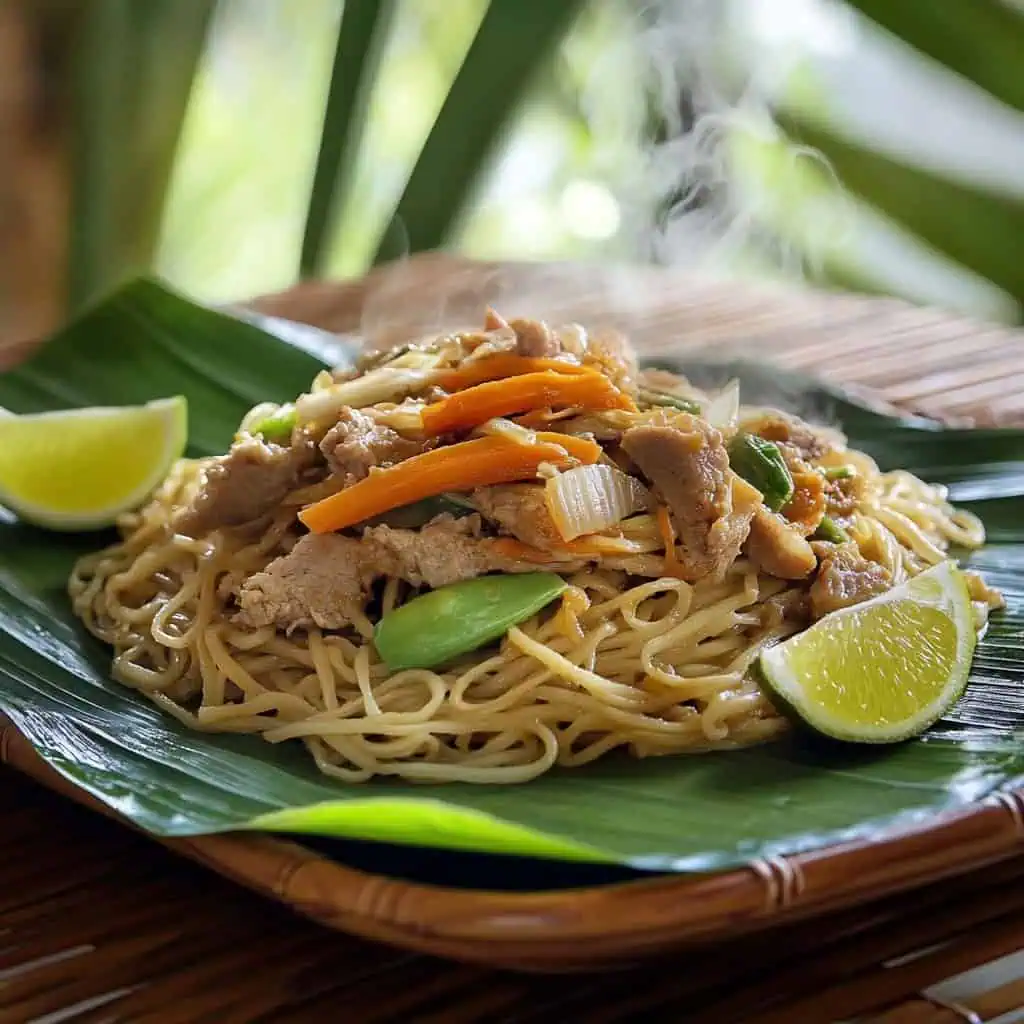





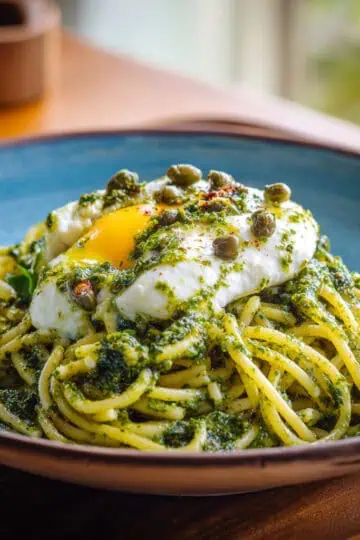
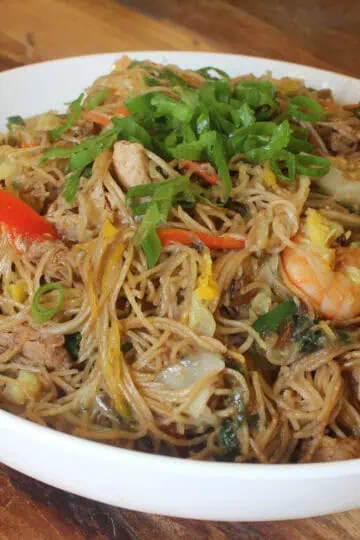
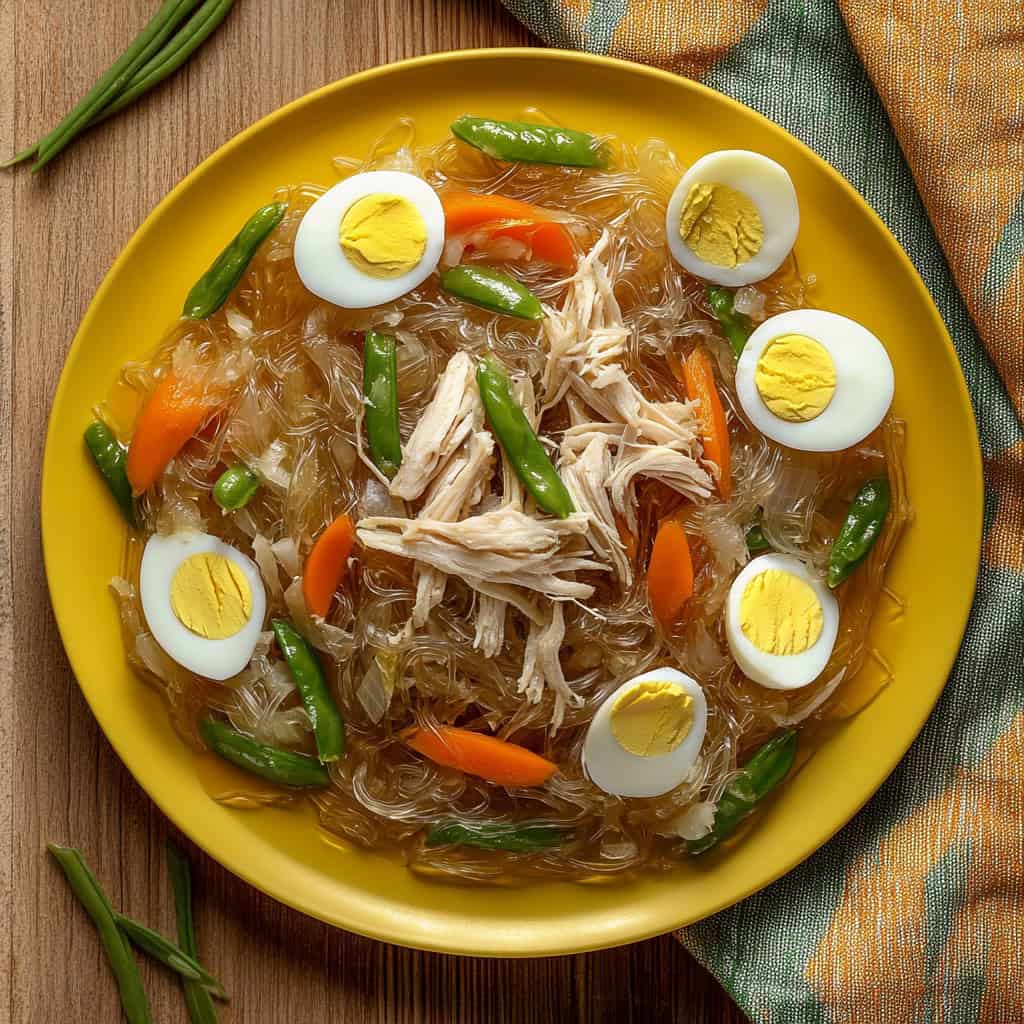

Comments
No Comments